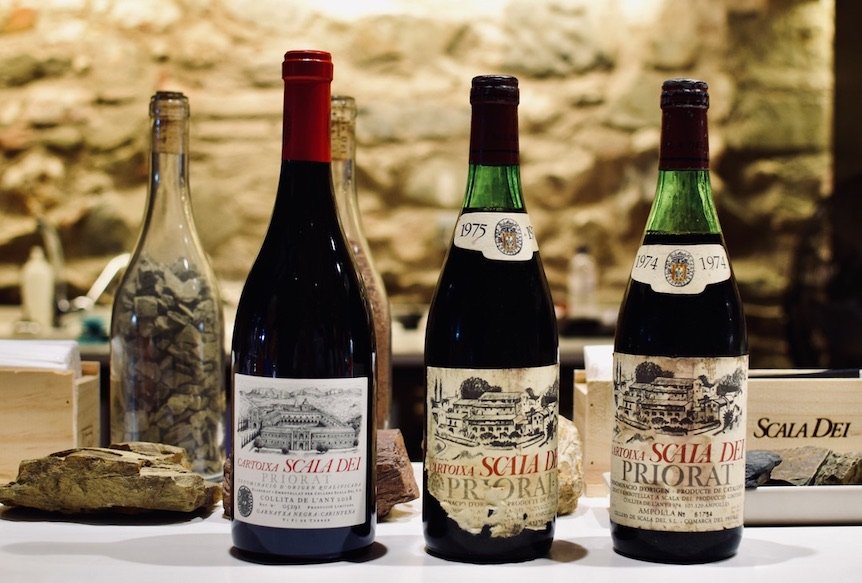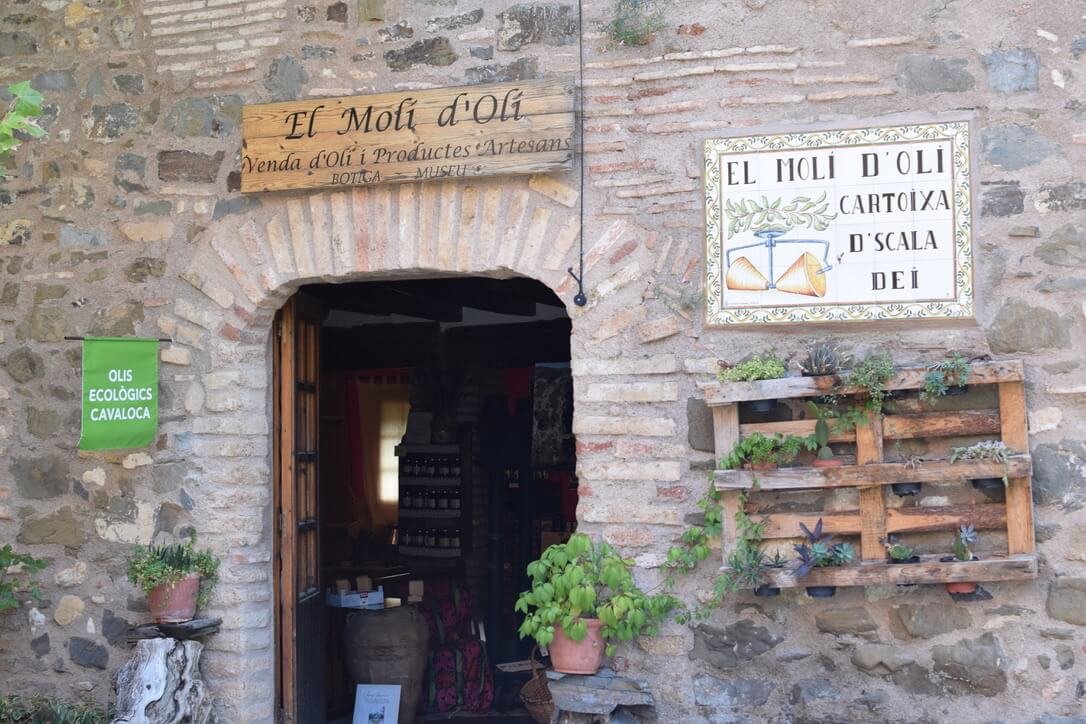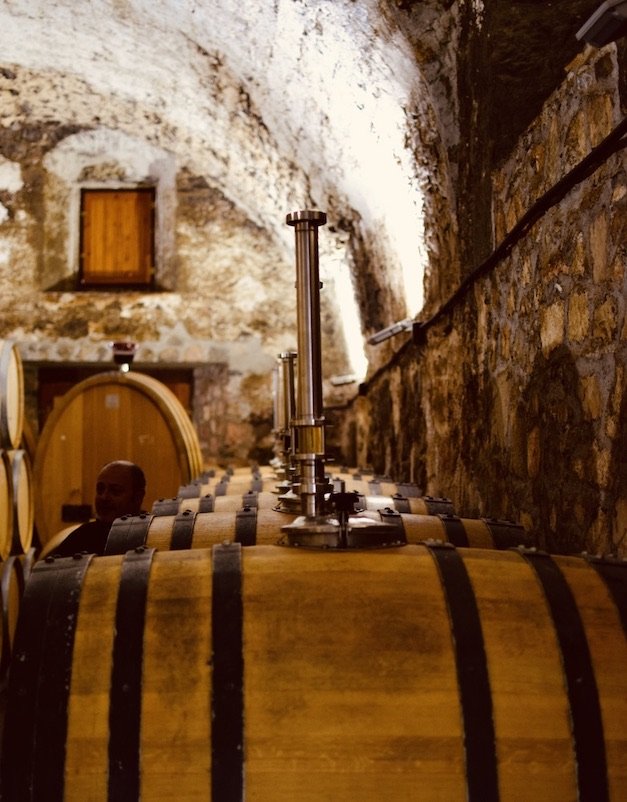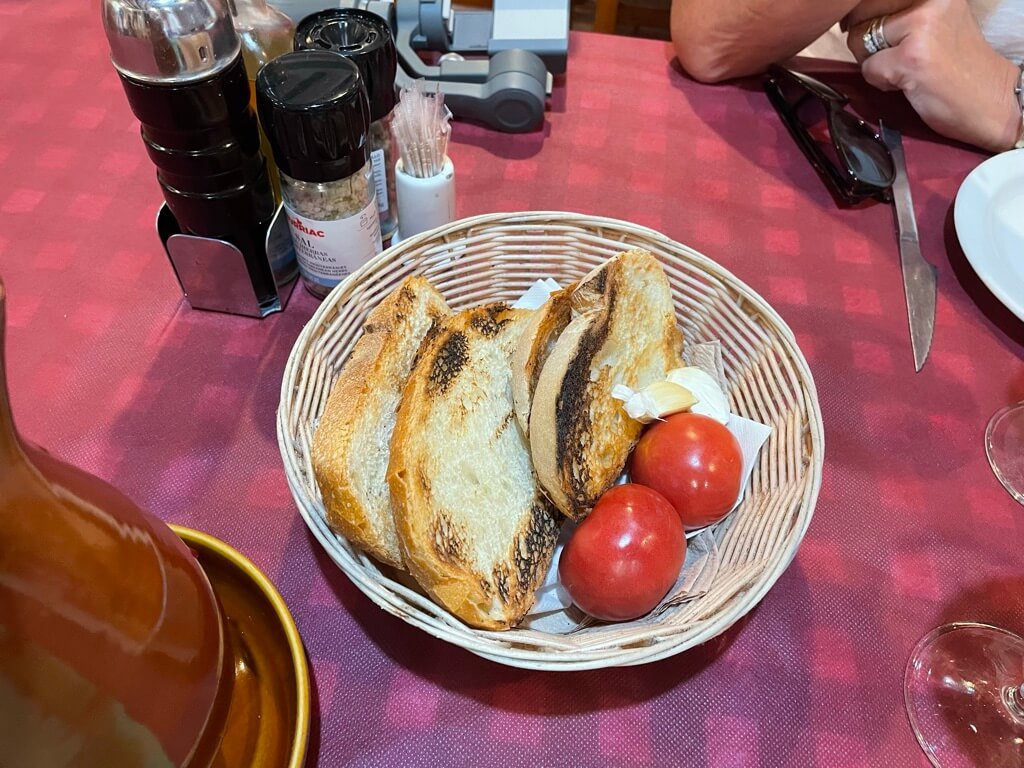Discover Catalonia’s incredible Priorat wine region and Priorat wines
Priorat wine region, Catalonia - Source: Winekeller
Read about our Priorat wine tour and wine tasting at the historic and iconic Scala Dei Priorat Cellars
Once upon a time, many years ago, Catalonia’s Priorat vineyards, in the north-east of Spain, were considered too difficult and unfit to farm, because of poor soils and the steep, terraced slopes. All of this changed in the 1990s however, when the wine world discovered that due to the poor soils and low yields, the quality of Priorat wines could be truly exceptional. Priorat, a very special and remote wine region, with an incredible history, now produces some of Spain’s most highly praised - and highly priced - wines.
We decided to visit Catalonia to discover more about the Priorat wine region and to sample what are said to be some of the best wines in Spain, at a winery which lies at the very heart of Priorat’s history and origins!
Read on to see what we discovered about Priorat, now one of Spain’s top two wine regions and its most iconic winery, Scala Dei Cellars…
Also see the video here:
The Priorat wine region
There are 10 different DOs (designation of origin) in the Catalonia wine region and in total they are responsible for 25% of Spain’s wine production. Half of this though is represented by the production of Spain’s sparkling wine, Cava in the Penedès DO.
However, there is just a single DO in Catalonia which is rated a DOCa, the premium quality rating and that is Priorat. There are only two such wine regions in Spain, the other being Rioja.
The Priorat wine region is located about an hour south and just inland of Tarragona in Catalonia.
Today there are some 2000 hectares of vineyards and more than a third are planted on steep slopes, with a gradient of more than 30°. Over 100 bodegas produce some exceptional wines here. It is a beautiful region, not dissimilar to Portugal’s Douro region, but on a smaller scale, with steep vine-covered slopes, winding roads, small villages and hard-working farming communities. There is a lot of history to discover too….
The history of Priorat
It all began with the arrival of the Carthusian monks…
The history of Priorat stretches back a long way! In fact about 1000 years, when in the 12th century, Carthusian monks travelled here from Provence and established a ‘Priorat’ (a Priory), which became known as ’Cartoixa d’Escaladei’ (Carthusian Monastery of Santa Maria d’Escaladei) in the foothills of the Montsant mountains. And of course, they planted vines, especially the red Garnatxa grape variety - or in French, Grenache. Many of the vines were planted at high altitude, some 500-800 metres above sea level.
For 600 years the people from the local communities rented the land from the monks and worked hard to make a living, farming the land.
The ‘Cellers de Scala Dei’
The monks left in 1835 and the people, angry that the monks had become rich from their hard work, looted the priory. The state then auctioned off the land in the early 1840s and it was purchased by a consortium of five families called ‘Societat Agrícola La Unió’, which later became known as ‘Cellers de Scala Dei’, formed to rebuild the Priory vineyards.
Cellers de Scala Dei’ bottled their first wine in 1878 and won a gold medal at the Paris World Fair in the same year.
After Phylloxera
The phylloxera crisis of 1893 hit the region hard. Vines were replanted but the steep terrain made the work arduous. The resulting wines weren’t great quality and were sold in bulk - not in bottles. Many families moved away from the region during this period, as they found it hard to make a living from the land and the lure of work in the textile mills was attractive. Vineyards were replaced by forest land and the region went into decline.
The reinvention of Priorat in the 1900s
In 1928, Priorat wine families joined together to protect the good name of Priorat wine, which ultimately resulted in the Priorat DO being confirmed in 1954.
In 1974 the ‘Cellers de Scala Dei’ families started to focus on the quality of the wine, purchased new machinery and produced their first bottle of wine for commercial sale, in that same year.
In 1989 5 wine entrepreneurs joined forces to make Priorat wine in the village of Gratallops. Their wines were distinctive from the former Priorat wines - much more concentrated, with a more mineral flavour and complex blends including some French grape varieties, innovative winemaking and ageing in new French oak barrels.
Such was the positive international response to these wines, these 5 entrepreneurs established their own bodegas and this encouraged many others to arrive in the region. A certain Robert Parker then visited the region and put Priorat on the map with excellent ratings. The rest is history as they say!
Why does Priorat produce such excellent wines?
There are several reasons why Priorat wines are so exceptional and highly regarded:
The age of the vines and extremely low yields certainly contribute to the intensity and strength of Priorat wines. The older vines yield small, but top quality grapes.
The vineyards are protected by the Sierra de Montsant and annual rainfall is very limited, which would normally mean irrigation is necessary, if it weren’t for the special soils in this region, the primary factor influencing Priorat wines.
The poor, stony soils here are known as ‘llicorella’ and consist of dark-brown slate, with some quartzite. The soil lacks some nutrients, however it is very rich in minerals which helps produce the highly concentrated flavours. The soil is unusually damp which helps the vines to flourish, even in very dry periods.
For more about the terroir, see here.
Priorat wines
Priorat wines tend to be wonderfully concentrated, deeply scented red wines.
Priorat is one of the world’s few first-class wines to be made from Garnatxa grapes (Garnacha in Spanish and Grenache in French) and Carinyena grapes (Carineña in Spanish and Carignan in French). Carignan is the most widely planted grape variety in the region.
International grape varieties are grown here too, including Cabernet sauvignon, Merlot, Syrah and some Pinot noir. Other local Spanish grape varieties including Garnacha blanca and Macabeo are also increasingly used in Priorat wines. The majority of Priorat wines are red, but a growing number of excellent white wines are now also coming out of this special region. For more about Priorat grape varieties, see here.
The Priorat DO
Today there are 12 regions within the Priorat DO, representing the different towns/villages. Each subregion has a distinctive style of wine, influenced by various geographic, climate and environmental factors.
Our visit to Priorat’s ‘Scala Dei’
Scala Dei in Priorat, in the foothills of the Montsant Mountains, Catalonia - Source: Winekeller
Whilst spending time in Spain’s Catalonia region, on our list was to experience the Priorat wine region. To discover its wines, yes, but also to get to know more about the wine history here and to experience the remoteness of the region and the special landscapes.
When researching which winery - or bodega - to visit for a Priorat wine tour, we were heartened to discover that most wineries offer some sort of wine tourism service or ‘cellar door’.
As we only had time for one Priorat wine tour, we decided to visit the ‘Cellers de Scala Dei’ in the village of Escaladei, the birthplace of Priorat wines and at the heart of Priorat’s 1000 year old history.
About Scala Dei Cellars
Scala Dei Cellars is Priorat. Scala Dei is the name of the consortium of families who purchased the Carthusian Monastery in the early 1840s, to try and promote grape growing on the land. This consortium was the foundation of today’s Priorat DO and the origin of the Scala Dei company today.
Scala Dei Cellars is located in the village of the same name - ‘Scala Dei’ or ‘Escaladei’ - and located in a valley in the heart of the Montsant mountain range, right next to the famous Monastery Santa Maria de Scala Dei, or priory, after which the Priorat region is named.
The name ‘Scala Dei’ comes from a local legend, which led to the Monastery being built here. It is said that a shepherd dreamt of angels who, on a ladder leaning against a pine tree, ascended to heaven amidst a great flash of light. Hearing the shepherd's story, monks looking for a site for the new monastery took it as a divine sign and settled there.
The old, historic wines of Scala Dei, Priorat - source: Winekeller
Scala Dei vineyards
The motto of Scala Dei today is to ‘produce wines that are the ultimate expression of the terroir’ and Scala Dei is famed especially for its amazing Garnatxa (Garnacha/Grenache) wines, which are very typical of the unique terroir in this part of the Priorat wine region.
Scala Dei farms about 70 hectares of land, comprising 41 individual vineyards. These are planted mainly with Garntaxa/Grenache grapes and the second most important grape variety, Carinyena/Carignan. The vines are, on average, 50 years old.
The Scala Dei vineyards are the highest altitude vineyards in the Priorat wine region, at between 400 and 800 metres above sea level. There is also more clay and limestone in the soils on the Montsant mountain - more so than is typical of the rest of Priorat - ideal soils for growing Garntaxa/Grenache, with more nutrients and less minerals. This helps explain the very unique style of Scala Dei wines, which are typically fresher than other Priorat wines.
The Garntaxa/Grenache grapes are grown mainly on the mountain at higher altitudes and these complement the Carinyena/Carignan grapes, which are grown more in the lower altitude/slate soils.
Scala Dei wines
Scala Dei started to become well-known for its particular style of Priorat wines in 2010 when it produced its first single vineyard ‘Scala Dei Garnatxa’ wine, made from grapes from a single historic estate, vinified in the traditional way in cement tanks and aged in French oak barrels.
Scala Dei wines are made with minimum intervention and organic farming and winemaking processes and all grapes are harvested by hand.
Scala Dei has a comprehensive range of wines, including a white Grenache, a rosé and a blanc de noirs wine, however it's the luscious, expressive reds that Scala Dei is known for. Its Scala Dei Cartoixa wine is emblematic of the red Garnatxa/Grenache and Carinyena/Carignan wines, named after the famous nearby Priorat Monastery, made from the best grapes from the best plots, from vines between 65 and 110 years old.
A Scala Dei wine tour
We spent almost 3 hours visiting Scala Dei and it was a thoroughly interesting, informative wine tour.
On the Scala Dei website it states ‘A visit to the Cellers de Scala Dei winery is a real journey through time’ - and we would agree - it was! You need to book a tour in advance and there is only the option of a guided tour - so no self guided tours.
Our guide gave us a thorough overview of the history of the Priorat wine region and the Scala Dei Cellars and took us into the ancient cellars, dating back to the 17th century and the home of the first ever bottle of Priorat wine in 1878!
We were fortunate that it was harvest time when we visited so we could watch the grapes being sorted and crushed - it was certainly a very busy time!
Our tour was then followed by a tasting of five different Scala Dei wines, which were all incredible. I should say that a standard tasting includes four wines, but we were lucky enough to be offered to taste the Scala Dei Masdeu wine, which was stunning!
After the tasting we spent some time in the lovely gift shop, before we left to go and find some lunch! (see later).
We would highly recommend a Scala Dei Cellars wine tour and tasting and it was a superb introduction and overview to the beautiful, special and unique Priorat wine region.
Where to find Scala Dei Cellars
Address: Cellers Scala Dei, Rambla Cartoixa, S/N 43379 Escaladei
Visiting Scala Dei and Priorat
We had less than a day in Priorat but it’s definitely worth exploring more. You could certainly arrange two Priorat wine tours in one day if you wished, or perhaps spend a couple of days, also allowing time to explore the lovely villages and historic monuments and enjoy the stunning scenery. This remote region is all about wine - and also olive oil - and a traditional farming way of life.
The beautiful landscapes of Priorat, Catalonia - Source: Winekeller
Getting to Priorat
We drove to Priorat from Sitges where we were staying, but if you were driving from Barcelona it would take you a couple of hours. It’s just 1 hour’s drive from Tarragona. For local bus and train information, see here.
After our cellar visit, we drove around Priorat, enjoying the hilly landscapes, vineyards and villages of this lovely region, but we didn’t have time to explore further. We definitely want to go back to discover more!
Planning a trip to Priorat
This is an excellent website for planning a trip to Priorat, with lots of information to help you get organised, including accommodation, the location of tourist offices and outdoor leisure and activity companies.
What to do in Priorat
There’s much to discover in Priorat and it’s the type of place you shouldn’t hurry! In addition to the famous Carthusian Monastery , there are lots of other historical sites to enjoy, including a prehistoric settlement and the beautiful village of Siurana, the last Moorish stronghold in Catalonia.
See here for ideas about what to do, see and discover in Priorat. In addition to monuments and places of interests, there’s also lots of opportunities here for nature and activity lovers and the stunning Monsant Natural Park is on your doorstep.
Follow the Wine Trails
A great way to discover this amazing wine country is to follow the Priorat DO Wine Trail - and there’s also one for the neighbouring Monsant wine trail too! Not to be outdone, there is an Olive oil Trail where you can discover and taste the amazing olive oils produced in Priorat.
Other excellent ideas for spending time in Priorat
Here are suggestions for spending one day in Priorat, or perhaps a weekend? And take a look at some suggested car routes through Priorat to ensure you experience the best of the scenery, villages and of course the wine landscapes! See some of the lovely Priorat villages below….
Spending more time in Scala dei/Escaladei
Escaladei is not the largest town or village in Priorat but it has lots of historical and cultural significance. In addition to visiting the Scala Dei cellars, we would recommend having lunch and exploring the Monastery of course.
Also, if you want to discover more about the wine here, there are two other cellars you can visit in the village of Scala Dei - ‘La Conreria de Scala Dei’ and Terra Dominicata.
Where to eat
There are two restaurants in the village of Scala Dei - ‘El Rebost de la Cartoixa’ and Alma Mater. Both are situated within walking distance to the Scala Dei Cellars. We opted for El Rebost de la Cartoixa, as did several others from our tour and we enjoyed a fabulous set menu lunch of the traditional Catalan ‘tomato bread’, Catalan salad, followed by local grilled sausage and fresh trout. The food here is simple and rustic, but really tasty and the service is great.
Visiting the Monastery
The Carthusian Monastery of Scala Dei
In 1991, the Cellers de Scala Dei ceded the remains of the Carthusian monastery to Catalonia to help promote new archaeological findings and to open it up to visitors. Since then, the Carthusian Monastery of Scala Dei has received more than thirty thousand tourists a year and today it is one of the most important historic sites in Priorat.
See here for more information about visiting the monastery.
For more about what to do in Catalonia, refer to our website page and to the Catalunya tourism website.
Conclusion and personal highlights
We may have only spent one day in Priorat but we loved it and have vowed to return soon to explore more! We can highly recommend a wine tour at Scala Dei Cellars, especially as it is so central to the history of the Priorat region. It’s wonderful to simply drive around the region, taking in and enjoying the amazing scenery - we kept having to stop every few hundred metres to get out of the car and take photographs!
Priorat is such an incredible ‘wine story’, with its long and challenging history over 1,000 years and then despite everything, Mother Nature combined with a community’s hard work and commitment produces such an incredible product, respected and revered the world over. Try to explore this magical wine and wine region for yourself!




































